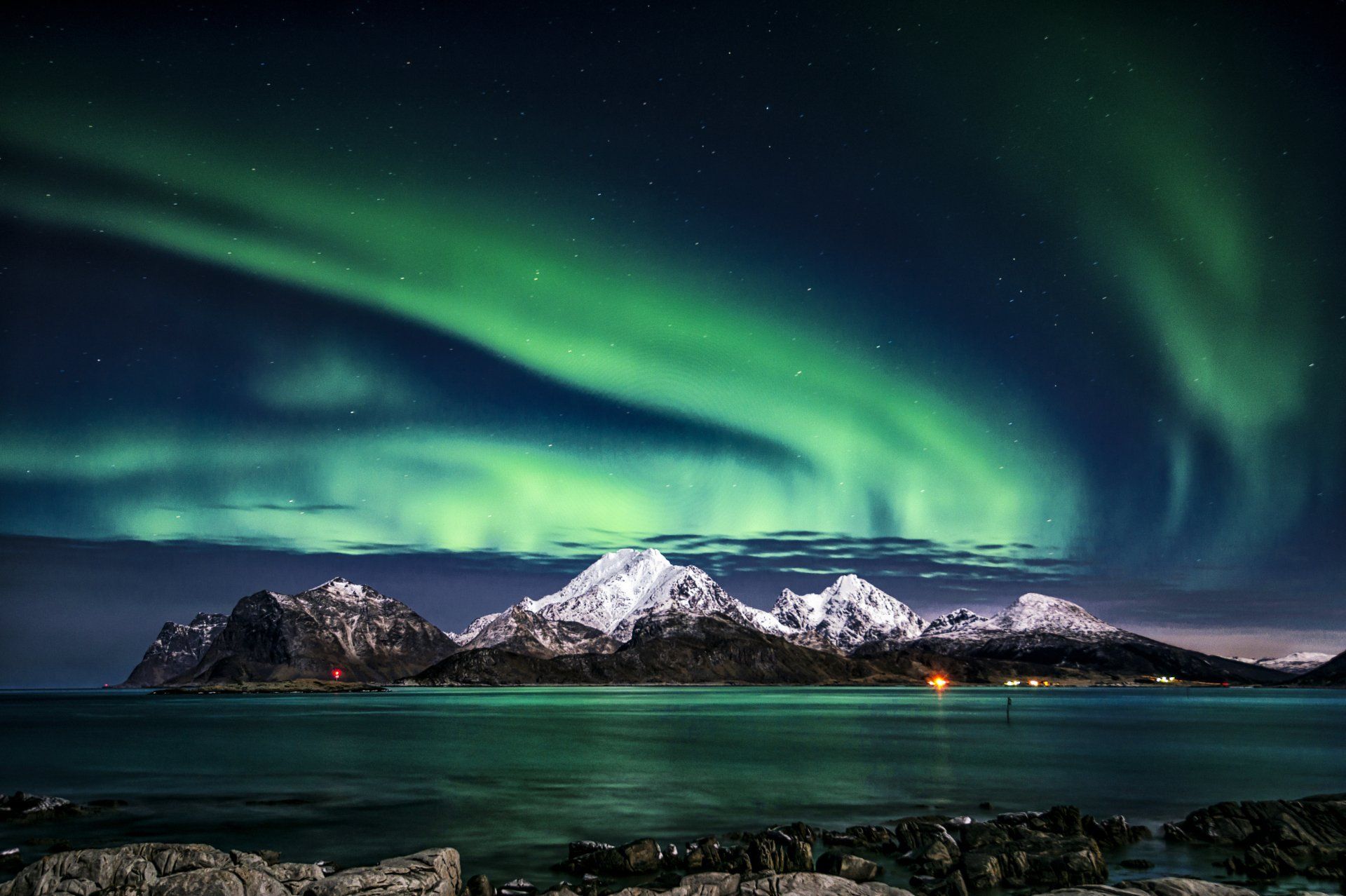The Northern Lights
What Are the Northern Lights?
The Northern Lights are a natural light display caused by charged particles from the sun colliding with Earth’s magnetic field. As these particles interact with the atmosphere, they create colorful light shows in the sky, visible in the polar regions. In Svalbard, you can witness the Aurora Borealis in its full glory due to the archipelago’s location well above the Arctic Circle.

When to See the Northern Lights in Svalbard?
Svalbard offers one of the best locations for viewing the Northern Lights, with optimal viewing months from late September to mid-April. During this period, the long polar nights and clear skies provide ideal conditions. The best time to catch a glimpse is usually between 9 PM and 2 AM, when the sky is darkest and the auroras are most vivid.
- September to November: The early fall months offer relatively mild temperatures, with the added benefit of the sky still being dark enough for Aurora sightings.
- December to February: These months feature the darkest skies, with polar nights lasting up to 24 hours, providing maximum opportunities for Aurora viewing.
- March to April: The tail end of the season still offers great chances to see the lights, with the bonus of slightly milder temperatures.
How and Why Do the Northern Lights Happen?
The Northern Lights occur when charged particles (electrons and protons) emitted by the sun interact with the Earth’s magnetic field. As these particles travel toward the poles, they collide with atoms in the atmosphere, causing them to emit light. The specific colors of the Northern Lights (green, purple, red, and blue) depend on the type of gas being excited in the atmosphere:
- Green: The most common color, caused by oxygen molecules about 100 km above the Earth’s surface.
- Purple and Red: Created by high-altitude oxygen, above 200 km.
- Blue and Yellow: Result from nitrogen and other gases.
Practical Tips for Midnight Sun Visits
- Plan for the Light: Bring sleep masks to help adjust to constant daylight.
- Stay Energized: The endless sun can disrupt your internal clock—stick to a regular schedule for meals and rest.
- Book Early: Summer, similarly to winter, is a popular time to visit, so secure accommodations and tours in advance.
Fun Facts About the Midnight Sun
- Longest Season: Svalbard experiences one of the world’s longest periods of midnight sun due to its extreme latitude.
- Cultural Celebrations: Locals celebrate the return of the midnight sun with outdoor festivals and gatherings.
- Nocturnal Wildlife:
Animals adapt to the constant light, with many staying active around the clock.
Why Visit Svalbard for the Northern Lights?
- Prime Location Above the Arctic Circle
Svalbard is located between 74° and 81° North, making it one of the best places in the world to witness the Northern Lights. The archipelago lies directly in the Aurora oval, an area around the magnetic pole where Aurora activity is most intense. - Extended Viewing Window
Due to its location inside the Arctic Circle, Svalbard experiences polar nights, where the sun does not rise for months. This extended darkness provides ample time for Aurora sightings. - Unique Arctic Backdrops
Watching the Northern Lights in Svalbard means seeing them dance above glaciers, mountains, and frozen seas—creating a backdrop that is unmatched anywhere else in the world. Whether you’re aboard a ship, hiking on a glacier, or simply gazing from your accommodation, the scenery adds a magical dimension to the experience.
Tips for a Successful Northern Lights Experience
- Check the Aurora Forecast: The Norwegian Meteorological Institute and other websites offer real-time Aurora forecasts, helping you plan the best times for viewing.
- Stay Away from Light Pollution: To fully appreciate the Northern Lights, find dark areas away from artificial lights. Svalbard’s remote nature provides plenty of dark spots perfect for this.
- Dress Warmly: Svalbard's temperatures during the Northern Lights season can drop well below freezing. Be sure to dress in warm, layered clothing and bring gloves, hats, and insulated boots.
- Be Patient:
The Northern Lights are a natural phenomenon and can be unpredictable. Stay patient, as the lights might take time to appear, but when they do, the show is worth the wait.
Fun Facts About the Northern Lights in Svalbard
- Midnight Sun Connection: While Svalbard is known for its 24-hour daylight in summer, the long polar nights in winter provide the perfect conditions for the Northern Lights.
- Local Myths: In Svalbard and other parts of the Arctic, the Northern Lights have been historically linked to folklore and myths. Some believed the lights were spirits or a sign of future events.
- The Science of Color: While green is the most common color, rare red, purple, and yellow lights often appear under specific conditions, making each Aurora sighting unique.
Do you have any questions?
Leave your phone number below so we can arrange your next trip
Contact Us
We will get back to you as soon as possible
Please try again later


